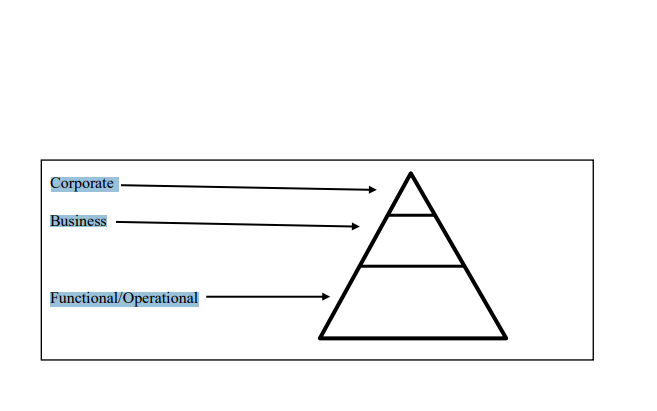Business strategy is a long term goal created by top management with an aim to achieve desired organization objectives.
Corporate level strategies are usually made by top management. They are top management overall, planning for the entire organization and its strategic business units. They occupy the highest level of decision making.

Types of Corporate Strategies
1. Growth Strategy
They seek to increase the organization‘s capability by expansion into new markets and products. We have different types of growth strategies:
Concentration – These are strategies that focus primarily on the line of business and focus on increasing the number of products offered in the market.
Vertical Integration – Refer to the extent to which an organizations expands upstream into industries which provide input (backward integration) such as a car manufacturing acquiring a steel rolling mill or downstream (forward integration) into industries that
manufacture products for example a car manufacturing company owning a car distribution chain.
It is useful where:
- Some suppliers may not be offering up to date quality hence organisations decide to make materials for themselves.
- Some suppliers are very expensive and end up eating into the firm‘s profit margin.
- It also helps to avoid over dependence on suppliers where the numbers of suppliers are few and competitors are many.
- An organization needs to acquire resources urgently or quickly.
- An organization needs to have enough capacity and human resource to manufacture their own products.
- Need to produce variety that might not be offered by suppliers in the market.
Forward Integration is when a company may decide to adopt this strategy due to the following:
1) To offer personalized services and be in touch with clients.
2) Cut on distribution and absorb large profit margins.
3) To avoid dependence on distributors who have no particular allegiance.
4) To obtain 1st hand customer feedback.
Disadvantages associated with forward integration
- Difficulty in balancing production and distribution functions.
- Very high investment in technology and distribution items which are expensive.
Diversification
- Related Diversification – This is expanding by emerging with firms in related industries.
- Unrelated Diversification – This is growing by merging with firms in unrelated industries where financial reforms are possible, it is also where a firm decides to add its ventures in a totally different product than the one being produced.
2. Stability Strategy
This focuses on maintaining the present course of action, seeking to maintain company status despite uncertainty of the environment when the industry is experiencing slow or no growth. Combination is a strategy where a company adapts according to the needs of a particular business aspect .e.g. add variety to its product lines.
3. Renewal Strategy
They are very intense and their efforts aim to improve an organization‘s competitive position in relation to its competitors. They do this by:
- Market penetration
- Product innovation
- Vigorous advertisement
- New product development
4. Functional Strategy
These are concerned with formulation of strategies relating to the main area of activities that constitute a business e.g. purchasing, finance, R&D, production etc. They are expected to be online and derived from corporate and business strategies. They are
mainly concerned with:
- Ensuring skills and competencies of function specialist in the organization are utilized effectively
- Integrating activities within different functional areas .e.g. purchasing and marketing.
- Providing information and expertise that can be utilized in the formation of corporate and business strategies.
5. Business level Strategy
It is a strategy that seeks to determine how an organization should compete in each of its single business unit. Allocation of resources among functional levels happens at this level and also coordination of corporate level strategies with functional level strategies happen here in order to strike a balance between the two. The following are aspects of business level strategy:
- Cost leadership – This is attaining and using the lowest total cost as a competitive advantage.
- Differentiation – Using product features to distinguish the firms offering from its competitors.
- Market focus – Concentrating competitively on a specific market segment.
